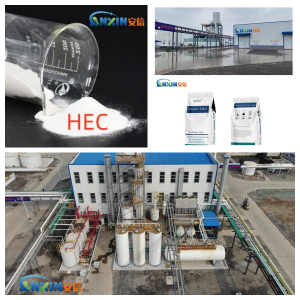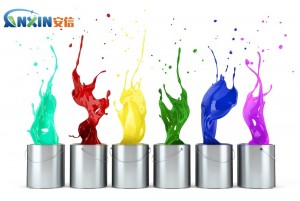Hydroxyethyl Cellulose (HEC) is a nonionic, water-soluble polymer derived from natural cellulose through etherification. Due to its excellent thickening, dispersing, emulsifying, film-forming, and rheological properties, HEC has become an indispensable additive in systems such as architectural coatings, latex paints, and water-based inks.
1. Basic Properties of Hydroxyethyl Cellulose
1.1. Excellent Solubility and Stability
HEC dissolves evenly in both cold and hot water, forming a transparent, stable colloidal solution. Its nonionic nature provides excellent chemical stability over a wide pH range (2-12) and is not susceptible to electrolytes or metal ions, making it suitable for a variety of coating formulations.
1.2. Excellent Thickening and Rheological Properties
HEC’s long molecular chain and ability to form hydrogen bonds significantly enhance the viscosity and rheological properties of aqueous systems. By controlling the degree of substitution (DS) and viscosity grade, coating application properties, such as leveling and spatter resistance during brush, roller, and spray application, can be adjusted.
1.3. Compatibility and Bioinertness
HEC is well compatible with a variety of surfactants, pigments, fillers, and other additives, without chemical reactions or compatibility issues. Furthermore, it is naturally derived, non-toxic, and odorless, making it environmentally friendly.
2. HEC’s Main Functions in Coatings
2.1. Thickener and Rheology Control Agent
HEC is one of the most commonly used thickeners in latex paint systems. It effectively controls the viscosity of the paint, ensuring optimal flow and adhesion during storage and application, thereby preventing sagging, spattering, and settling. Furthermore, HEC imparts excellent thixotropy to the paint, making it easier to spread during brush application and quickly recovering viscosity after application, improving the uniformity and fullness of the paint film.
2.2. Dispersion and Suspension Stabilization
HEC forms a spatial network within the coating system, stabilizing the suspension distribution of pigments and fillers and preventing sedimentation and agglomeration. Its nonionic properties ensure the effective function of the pigment dispersant in the system, enhancing color uniformity and gloss.
2.3. Improved Application Performance
HEC’s rheological control capabilities significantly enhance the application experience: preventing splashing during roller application, ensuring uniform atomization during spray application, and minimizing brush marks during brush application. It also improves the coating’s wettability and color development, resulting in a smoother and more delicate surface.
2.4. Film-Forming and Water-Retention
HEC forms a flexible film on the coating surface during the drying process, strengthening the adhesion between emulsion particles, thereby improving the mechanical strength and scrub resistance of the paint film. Its water-retention properties also help delay water evaporation, ensuring sufficient film formation and preventing chalking or cracking.
2.5. Improved Storage and Long-Term Stability
During long-term storage, HEC prevents latex paint from delamination, water extraction, or excessive viscosity changes. Due to its inert molecular structure, it does not react with other components, thereby extending the shelf life and service life of the paint.
3. Application Advantages and Selection Recommendations
3.1. Wide Range of Applications
HEC can be used in interior and exterior latex paints, elastic coatings, stone paints, primers, putty pastes, and water-based anti-corrosion coatings. In particular, in low-VOC (volatile organic compound) formulations, HEC offers advantages such as being naturally environmentally friendly, formaldehyde-free, and odorless, aligning with the development trend of green building materials.
3.2. Flexible Mixing
By selecting HEC with varying degrees of substitution and molecular weight, customized designs can be achieved for different systems. For example, high-viscosity HEC is suitable for heavy-duty coatings to improve thixotropy; medium-viscosity HEC is suitable for interior latex paints; and low-viscosity HEC is used in spray-applied or high-flow systems.
3.3. Synergistic Effects with Other Additives
HEC is often used in combination with polyurethane thickeners (PU) or acrylic thickeners (ASE, HEUR) to achieve optimized rheological structure and tactile properties at low addition levels. This compatibility allows formulators to flexibly adjust application viscosity and dry film properties at different stages.
HEC performs multiple functions in coating systems, including thickening, dispersing, stabilizing, retaining moisture, and controlling application. It is an irreplaceable and important additive for waterborne architectural coatings. With the continued development of environmentally friendly and high-performance coatings, HEC will continue to play a key role in green formulation design, bringing a better application experience and more stable product quality to the coatings industry.
Post time: Oct-28-2025








